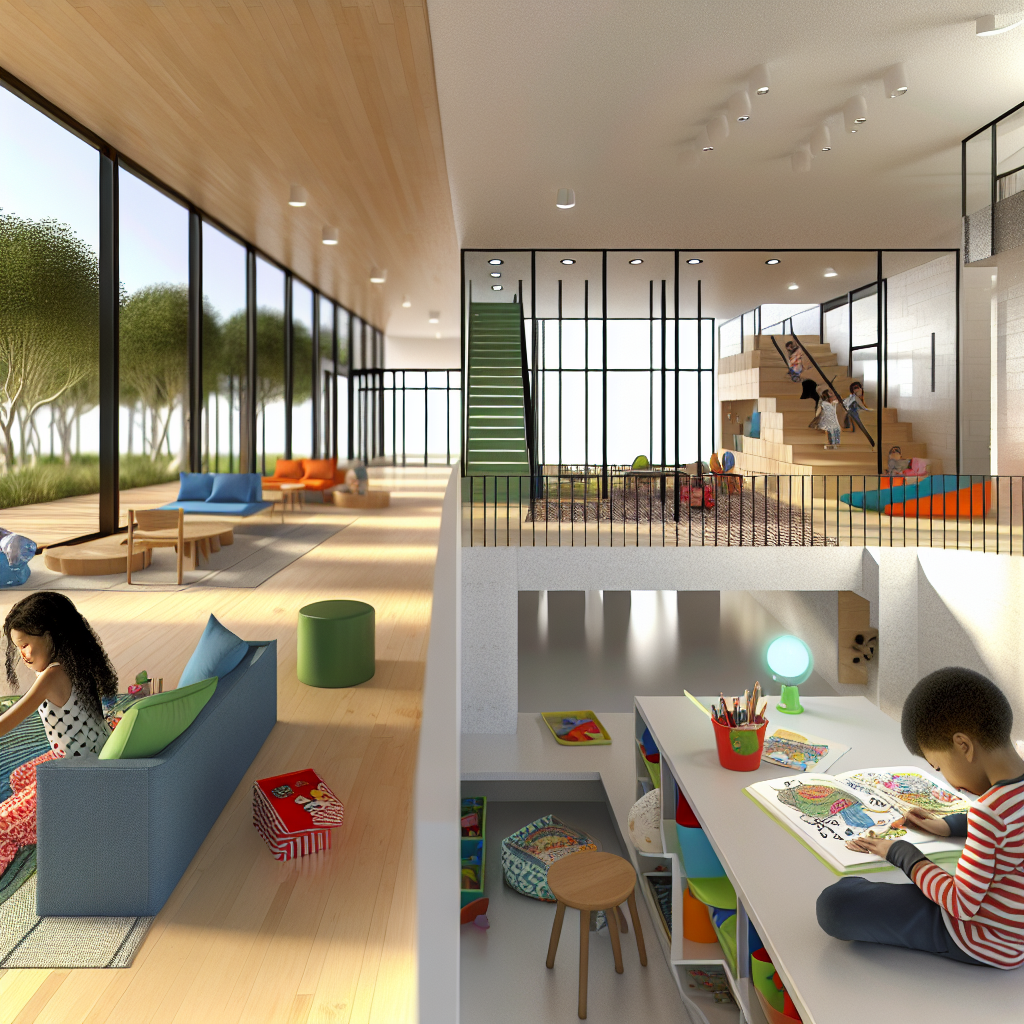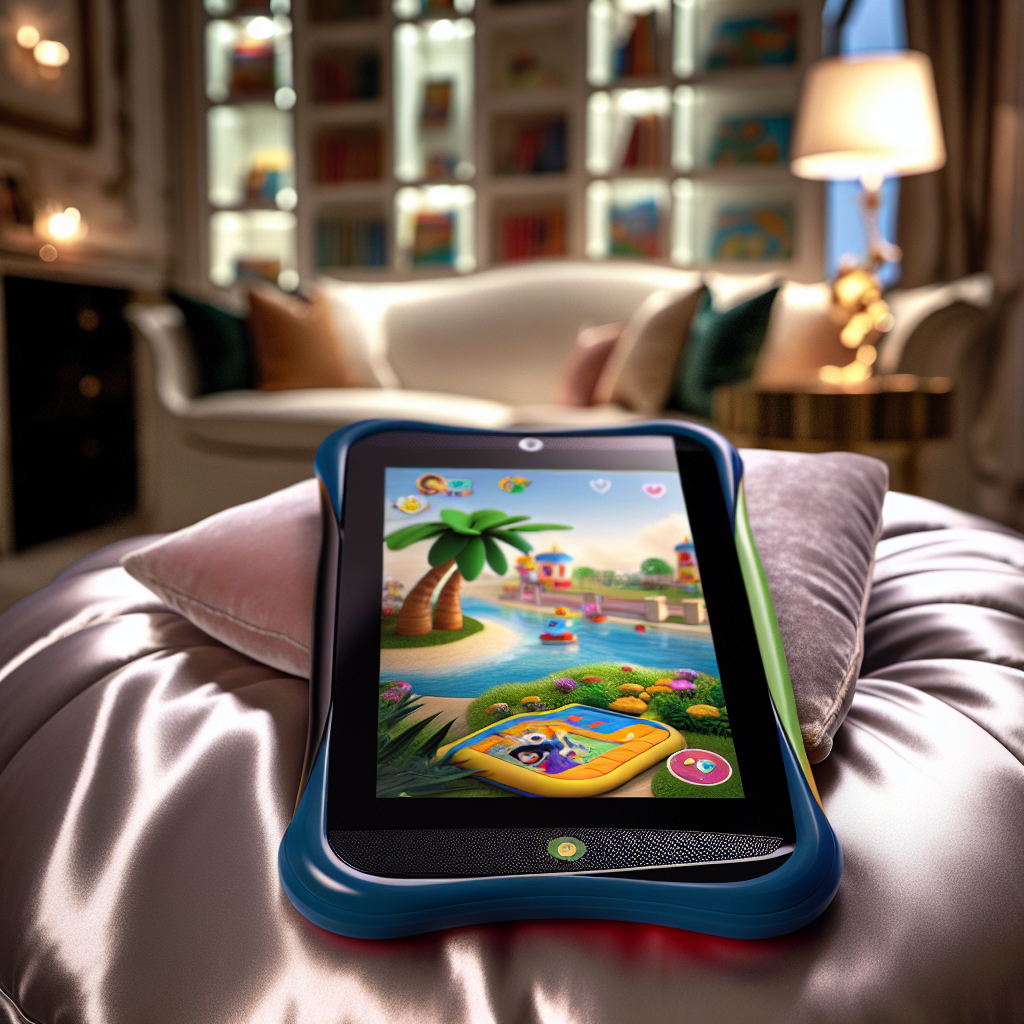Children’s Wing Design: Architecture Trends in Ultra-Luxury Homes
The Rise of Dedicated Children’s Wings in Luxury Estates
For affluent families, luxury living is not just about opulence; it’s about creating an environment that nurtures every family member’s well-being, learning, and creativity—including children. One of the most prominent trends in ultra-luxury home design is the inclusion of dedicated children’s wings, designed specifically to cater to the developmental and recreational needs of young residents.
In premier estates worldwide, children’s spaces are being reimagined beyond the traditional bedroom and playroom setup. Today’s elite parents—business magnates, celebrities, and royalty—are commissioning architects and designers to craft fully integrated environments that support their children’s education, independence, and holistic development. These separate yet connected wings allow children to grow in a space tailored exclusively for them while maintaining close proximity to the rest of the family.
Cutting-edge architectural trends for these spaces focus on a blend of aesthetics, functionality, and psychology. A well-designed children’s wing features age-appropriate living quarters with distinct areas for education, creativity, wellness, and social development. Modern design philosophies incorporate sensory-enhanced spaces, sophisticated safety features, and adaptability to a child’s evolving needs as they mature.
Moreover, top-tier architects are implementing biophilic design principles to create seamless indoor-outdoor integrations, fostering a connection with nature that enhances cognitive function and emotional well-being. Luxury smart home technologies further elevate the experience, enabling personalized automation for learning environments, climate control, and interactive play areas.
Finally, cutting-edge children’s wings incorporate wellness-oriented innovations such as sleep-optimizing bedroom designs, soundproof environments, and ergonomic study nooks that promote concentration and relaxation. These elements align with the latest research in child psychology, education, and environmental design.
For affluent families, a well-designed children’s wing offers more than an extravagant retreat—it serves as a sanctuary for exploration, growth, and well-being, ensuring that children thrive intellectually and emotionally in an environment tailored to their luxury lifestyle.
Architectural and Psychological Features Backed by Science
The Power of Biophilic Design in Child Development
A significant architectural trend in luxury children’s wings is the integration of biophilic design—bringing natural elements such as greenery, water features, and natural lighting into interior spaces. Research from the National Library of Medicine suggests that exposure to nature improves cognitive function, enhances focus, and reduces stress levels ([Read Study](https://www.ncbi.nlm.nih.gov/pmc/articles/PMC6377820/)).
Luxury estates now commonly feature indoor botanical gardens, private atriums, and expansive, multi-level outdoor play areas that blend seamlessly with indoor learning and play zones. This ensures that children remain connected with nature, benefiting both their mental and physical well-being.
Smart Homes Designed for Personalized Learning and Wellness
The rise of AI-powered smart home technology has transformed children’s spaces into interactive learning hubs. A study by Frontiers in Psychology highlights how adaptive smart technology enhances children’s engagement and mental development in educational settings ([Read Study](https://www.frontiersin.org/articles/10.3389/fpsyg.2021.759809/full)).
High-end estates now include:
– Interactive walls with AI-enhanced learning modules
– Smart lighting that optimizes concentration and relaxation
– Bespoke furniture that evolves as children grow
Luxury Sleep-Optimized Bedrooms for Peak Performance
Elite families understand that quality sleep is paramount to a child’s development. Research from the American Academy of Sleep Medicine underscores how circadian lighting, personalized temperature control, and soundproofing contribute to healthier sleep patterns and cognitive performance ([Read Study](https://aasm.org/children-sleep-needs/)).
Luxury children’s wings often feature:
– Blackout curtains for optimal melatonin production
– Noise-reduction panels to eliminate disturbances
– Adjustable sleep pods designed for customized comfort
Ergonomically Designed Study Spaces for Academic Excellence
As luxury homes increasingly incorporate custom-built learning environments, the importance of ergonomics in study areas has become a priority. A study published in Ergonomics suggests that quality furniture design and spatial ergonomics improve focus and learning efficiency ([Read Study](https://www.tandfonline.com/doi/abs/10.1080/00140139.2019.1614575)).
Premium study areas in ultra-luxury homes now include:
– Height-adjustable desks that adapt as children grow
– Virtual reality-enhanced learning stations for immersive education
– Sound-insulated tutoring rooms for private lessons and music practice
Multi-Functional Play Spaces for Holistic Growth
Playrooms in high-end residences are evolving into experiential learning zones. Research from the American Psychological Association demonstrates that play environments encouraging problem-solving and creativity significantly enhance cognitive and emotional intelligence ([Read Study](https://www.apa.org/monitor/2020/01/play-mind)).
Cutting-edge play spaces now feature:
– Immersive art studios fostering creative expression
– STEM-focused builder labs for hands-on learning
– Indoor climbing gyms for both mental and physical agility
Designing for Independence: Private & Autonomous Spaces
Providing children with their own dedicated spaces encourages independence and confidence. A study in the Journal of Environmental Psychology found that when children have autonomy over their environment, they develop stronger self-esteem and problem-solving abilities ([Read Study](https://www.sciencedirect.com/science/article/abs/pii/S0272494418302533)).
In response, luxury home architects are now incorporating:
– Private reading nooks for quiet reflection
– Independent-access gardens to connect with nature
– Self-sufficient kitchenette areas to foster life skills from an early age
The Future of Ultra-Luxury Family Living
Innovative children’s wing design is revolutionizing how elite families create spaces that enhance their children’s well-being, education, and development. Architectural advancements backed by research emphasize the importance of biophilic design, smart automation, wellness-focused sleep environments, and psychologically sound spatial planning.
These dedicated spaces are not just about indulgence but about fostering balanced, thriving lifestyles for young residents. As ultra-luxury home architecture continues to evolve, forward-thinking parents are investing in residences that prioritize their children’s long-term emotional, intellectual, and physical well-being—ensuring they grow into the next generation of leaders, creators, and innovators.
—
**Summary:**
The article explores the rise of dedicated children’s wings in ultra-luxury homes, highlighting how affluent families are investing in cutting-edge architectural designs that cater to their children’s developmental and recreational needs. The article delves into the scientific research behind the key features of these spaces, including the integration of biophilic design, smart home technology, sleep-optimized bedrooms, ergonomic study areas, and multi-functional play spaces. The article concludes by discussing how these innovative children’s wings are revolutionizing the future of ultra-luxury family living, ensuring that children thrive intellectually, emotionally, and physically in a tailored environment.
**References:**
– [National Library of Medicine: The Cognitive Benefits of Biophilic Design in Child Development](https://www.ncbi.nlm.nih.gov/pmc/articles/PMC6377820/)
– [Frontiers in Psychology: Adaptive Smart Technology in Education](https://www.frontiersin.org/articles/10.3389/fpsyg.2021.759809/full)
– [American Academy of Sleep Medicine: Children’s Sleep Needs & Environment Optimization](https://aasm.org/children-sleep-needs/)
– [Ergonomics Journal: Spatial Ergonomics for Children’s Learning Environments](https://www.tandfonline.com/doi/abs/10.1080/00140139.2019.1614575)
– [American Psychological Association: The Impact of Play on Cognitive and Emotional Intelligence](https://www.apa.org/monitor/2020/01/play-mind)
– [Journal of Environmental Psychology: The Importance of Spatial Privacy in Child Development](https://www.sciencedirect.com/science/article/abs/pii/S0272494418302533)

Dominic E. is a passionate filmmaker navigating the exciting intersection of art and science. By day, he delves into the complexities of the human body as a full-time medical writer, meticulously translating intricate medical concepts into accessible and engaging narratives. By night, he explores the boundless realm of cinematic storytelling, crafting narratives that evoke emotion and challenge perspectives. Film Student and Full-time Medical Writer for ContentVendor.com



